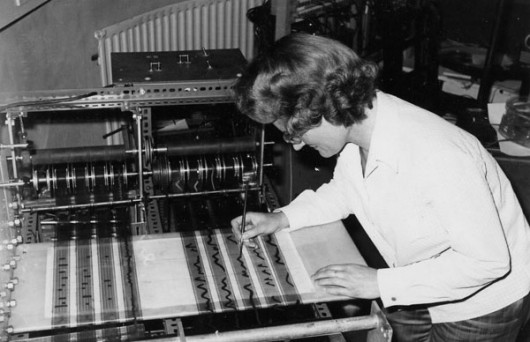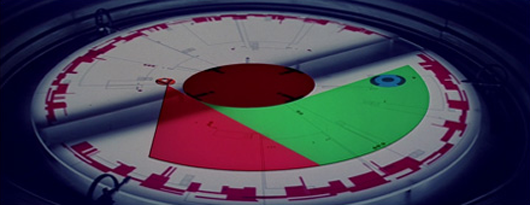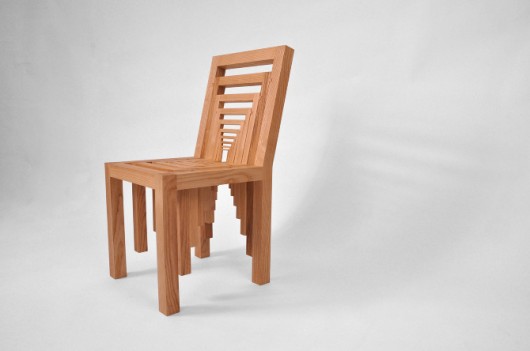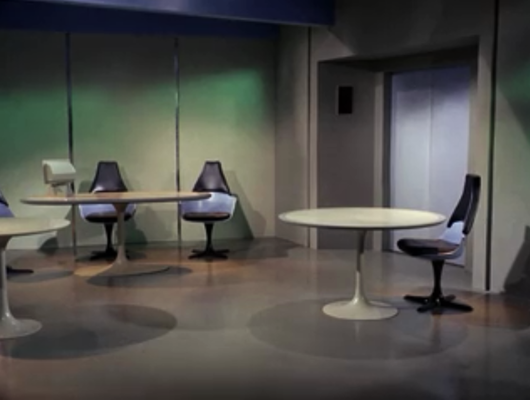
Last weekend we were looking at a pioneering ’50s Synthesizer that was unearthed in a French barn. The photo above reminded us of Norman McLaren’s early experimental films where he not only scratched the animation directly onto celluloid, but created the soundtrack by scratching the optical track too.
In order to create music on the Oram, a composer painted waveforms directly onto 35mm film strips which were fed into the machine. Inside, photo-electronic cells read the light pattern and interpreted it as sound.
Lovely! It was built by Daphne Oram in 1957, a year before she co-founded the BBC Radiophonic Workshop.
Alice Bartlett unearthed this uncanny movie of ‘Swarmanoid’ modular robots that specialise in ‘manipulating objects and climbing, some in moving on the ground and transporting objects, and some in flying and observing the environment from above‘. Amazing to watch these little beings adapt around our human environments. In similar territory, we’re monitoring the development in drone technology, including the ‘Raven‘, a military drone that is somewhat like a model airplane that fits in a backpack. “At its simplest, a Raven acts as a flying pair of binoculars that can look over the next hill”. Fast, cheap and out of control.
Many in the studio have been experimenting with (and like Chris Heathcote giving up on) Tiny Tower with its tiny, AI-driven version of Facebook. James Darling has been experimenting with other forms of software-generated social avatars with Weavrs, discovering that his mutant creation is a bit of an arse. The studio is very much enjoying the astutely-observed impersonation that is Peter Molyneux 2, especially his comments on the rumours of pico-projectors in next-gen consoles.
A recently unearthed Apple patent for “schematic maps” reminded us very strongly of Linedrive research from Siggraph back in 2001 and of course of Walking Papers by Michal Migurski.
Bill Buxton’s collection of 30 years of UIs and devices is great, via @kaeru.
We’re enjoying Charlie Stross on the next 50 years of security, which is actually a brilliant bit of general near-futurism on the security implications of Shannon’s limit, energy, lifelogging, DIY genomics and democracy:
From being an afterthought or a luxury – relevant only to the tiny fraction of people with accounts on time-sharing systems in the 1970s – security is pushed down the pyramid of needs until it’s important to all of us. Because it’s no longer about our property, physical or intellectual, or about authentication: it’s about our actual identity as physical human beings.
From Matt Jones, news that IBM is creating chips based on the human brain, battling the Von Neumann Bottleneck with neurosynaptic chips, where ‘the integrated memory is represented by synapses, computation by neurons and communication by axons‘. This apparently is aimed towards our sensor heavy future:
“If today’s computers are left brained, rational and sequential then cognitive computing is intuitive and right-brained and slow, but the two together can become the future of our civilization’s computing stack.”
Matt Jones also discovered this visual essay about the design of displays in Star Wars films. Dan O’Bannon and Bob Greenberg created realistic computer simulations and displays with traditional rostrum animation methods inspired by Douglas Trumbull, and went on to collaborate with Larry Cuba on vector-based computer graphics.

The highly credible look of these displays went on to influence other simulated computer systems and displays in films like Alien and Blade Runner. These tropes are still clearly visible in cinema today, over 40 years later. An incredible legacy that Dan O’Bannon should be proud of.
Loosely related: the quiet despair of the Starship Enterprise (via Khoi Vinh).
Just as Matt Webb returned from the Worldships conference at the Interplanetary Society, Nick Ludlam discovered that SpaceX has been given permission to start flights up to the International Space Station. Perhaps there is hope in spaceflight yet.
We’re still not sure if we agree with the analysis, but the Meat to Math Ratio is an interesting provocation:
“In a data-driven world, the true measure of any organization, from a regional government to a global conglomerate, is its meat-to-math ratio. This sounds like a cold statement, saying machines are better than people. That’s not the point here: machines are better with people, and companies that can’t augment their employees with data and tools, that cling to antiquated ideas like broadcast, and that can’t turn their data exhaust into insight and innovation, are doomed.”
Via @janchipchase is this $80 Android phone from Huawei, which, although suffering from limited memory and battery-life problems, is apparently selling very well in Kenya. Making the OLPC look less like a failure and more like a mistake in product category.

A cinema-furniture hybrid, this Inception Chair by Vivian Chiu has ‘hand-cut grooves that notch inside each other, securely connecting them together but making it easy to disassemble‘.

Alex Jarvis found this Gorgeous furniture by Rupert Blanchard (via @LukeScheybeler) who only uses “broken, discarded and odd drawers that no longer have a carcass” and sets himself a rule “to only use objects that no longer fulfil the purpose for which they were originally created.”

And finally brilliant long-exposure photography from the front of trains, incredible how three-dimensional these images feel.



No Comments or Trackbacks